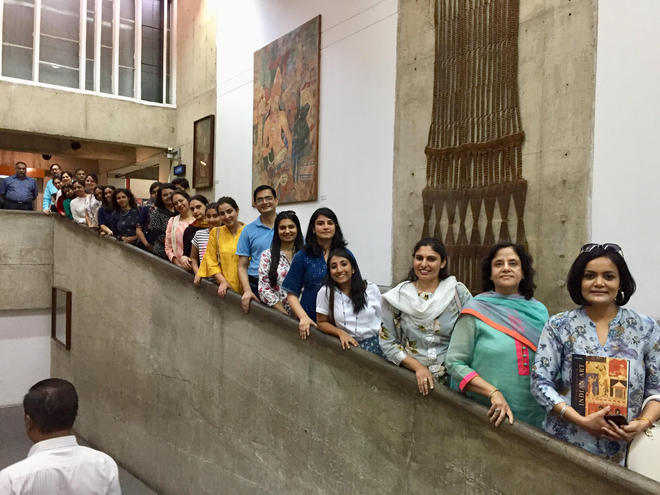
Amarjot Kaur
Not long ago, Oxford University press came up with a publication called The Oxford Readings in Indian Art, a book authored by Prof BN Goswamy and Vrinda Aggarwal. Inspired by the book, an intimate talk with art historian Prof BN Goswamy extended to a walk across the Government Museum and Art Gallery, Sector 10, as the conversation explored several facets of Indian art.
Complex and challenging, art in India has little documentation; and whatever exists is so widely scattered that it becomes a task in itself to locate it. The book addresses these issues through original, primary sources. The Oxford University Press describes the book as: “The voices one ‘hears’ in these excerpts are true and authentic, and if there are any speculations or interpretations, they come from texts or persons directly involved in the making or the understanding of the art of India. Sages speak here, in these pages, of the inter-relationships between the arts, practitioners record measurements of units of time and space, iconographers lay down rules and practices, artists record their experiences and patrons their delights. Information gathered from colophons is documented; excerpts are taken from memoirs and contemporary histories; the work of early writers on the arts is presented.”
Learning curve
Some 70 people, including teachers, art enthusiasts and artists, attended Goswamy’s talk in the library of the museum. Organiser of the event, Medhavi Gandhi of The Heritage Lab said, “We wanted to bring this book to life. This book does not have any pictures and we wanted to bring a pictorial reference to it while making people physically interact with them. Also, Prof Goswamy’s talk added more perspective to the book. This book mentions several details that trace the evolution of Indian art, including kings making art, like Bodhisattva; sculpting was one of bodhisattva’s many skills. According to Kusa Jataka, he sculpted a statue of a woman in gold, and asked his parents to get him a girl who looks like the girl he sculpted and only then will he marry her. And we have the sculpture of Bodhisattva right here,”
she smiles.
Mughal glory
The conversation then explores the Mughal era. “Shah Jahan was a patron of art. Jahangir’s biography mentions that when he looks at the hair of the eyebrow in a painting, he is able to identify the artist who made it and Shah Jahan, as we all know, made the Taj Mahal,” says Vrinda Aggarwal, as more than 40 people listen to her.
The banter traversed through the contemporaries of Shah Jahan, who were patrons of arts, and landed at the classification of women as nayikas, which became the reference point to classify women in art form. A question was popped: Which nayika would be chosen to go with the handsome bachelor Bodhisattva? And the answer came soon after. “Probably the controlling nayikas who would have him give up his singlehood,” replied a doctor who worked at PGI.
Curse of the Ajanta
Several artists of different eras were inspired by Ajanta art. Many British art academicians went on expeditions to Ajanta and Ellora. They made replicas of the art there but each time, all these paintings burnt down. John Griffiths made Ajanta replicas but they burnt down in a fire. According to the V& A Catalogue entry for one of Griffiths’ copies of the paintings inside the Ajanta Caves, the cave complex was discovered in 1819 and since then many attempts have been made to document the paintings inside them. In 1844, Major Robert Gill was commissioned to make copies. Unfortunately, most of the paintings he completed were destroyed in a fire in 1866. To make up for this loss, from 1872 to 1885, John Griffiths and seven Indian students from the Bombay School of Art spent every winter at the caves, producing approximately 300 paintings. In India, artists like YG Srimati and Amrita Shergill took inspiration from Ajanta art, but never made replicas.



























